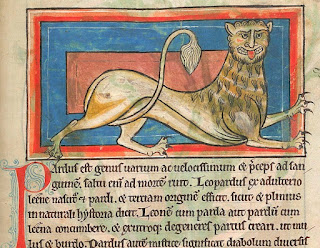A year later, Philip married his daughter, Isabella of France, to Edward II of England. Edward's letters to Isabella while he was away show affection. Later, however, his closeness to Piers Gaveston and Hugh Despenser the Younger became an issue: Edward spent his coronation feast in 1308 by Gaveston's side and not Isabella's. Isabella and Gaveston did form a relationship, and Edward and Isabella had children in 1312, 1318, 1321, and 1324.
Gaveston had many strikes against him in the barons' eyes: he was wittier than they, tended to give them unflattering nicknames, and was a better jouster. When Edward made the young man from Gascony Earl of Cornwall, there were many complaints about an earldom in foreign hands. His closeness to Edward meant Edward ignored the counsel of many more established men, although not all: Edward had plenty of well-respected men in positions of authority to run the kingdom.
But the barons' and Edward were in conflict during his entire reign, as was the case with his father's. When they decided that he needed to be deposed in favor of his eldest son (who would become Edward III), they drew up the Articles of Deposition (1327). There were six items:
1. That he is incompetent
2. That he won't listen to good counsel
3. That he lost Scotland (honestly, his father never gained Scotland, so to say he "lost" it...)
4. He has destroyed holy church (he actually built and supported many churches)
5. He has not done justice according to his coronation oath (see here)
6. He has done all he could to ruin his realm.
Curiously, no hint of improper sexual behavior.
The first hint of such comes 50 years later when a Cistercian in the abbey at Meaux accuses the king not of sodomy but of "too much sodomy." A contemporary historian, writing two years before Edward's death, refers to Edward's and Gaveston's relationship in comparison to David and Johnathan from the Old Testament, "a love which is said to have surpassed the love of women." That writer claims the hatred of Gaveston is because he was a foreigner and an upstart.
Did Edward and Gaveston have a homosexual relationship? It is certainly possible. Did they? Even those who hated Gaveston and killed him, and hated Edward and deposed him, never chose to accuse either of that sexual activity. The popularity of that view starts with Christopher Marlowe (1564 - 1593), and has provided fodder for controversy among historians ever since. The illustration is a 19th century painting showing the two cavorting while courtiers look on in concern. People can (and do) read into the facts whatever conclusion they prefer.
But those Despensers? So despised that devout Christians would even hire a magical hitman to eliminate them? Let's find out what they were guilty of next time.


























